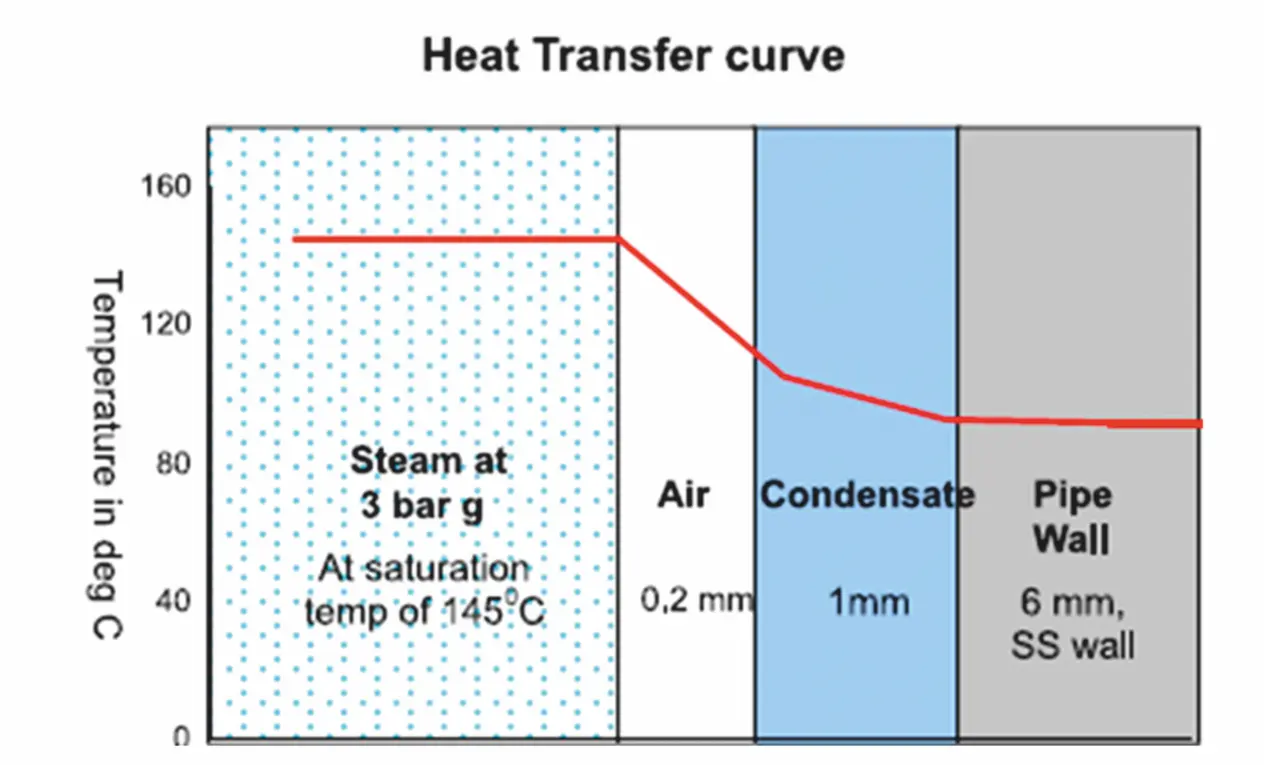How to ensure steam is free from air and non-condensable gases
Air and non-condensable gases can enter the steam system in many ways :
- During shutdowns or when steam pipelines are isolated, steam condenses, drawing air into the system through leaks in the piping, valves, flanges, etc. When steam is charged into the pipeline after a period of shutdown, the pipes are full of air.
- Air is also introduced in the system during maintenance of lines and accessories.
- Air or non-condensable gases dissolved in feed water can also be liberated during steam generation.
The presence of air in the steam system hampers the process of heat transfer and can cause a variety of issues including inability to achieve the process temperature, higher batch times and product rejections.

Air hampers heat transfer. As can be seen from the illustration alongside, just a 0.2mm layer of air results in a temperature drop of 40°C on the heat transfer curve.
A film of air only 0.025mm thick can resist as much heat transfer as a wall of copper 400mm thick. It is therefore important to eliminate air from the steam system.
Automatic air vents should be installed in steam systems and on process equipment with large steam spaces like autoclaves and tyre curing presses, to evacuate air.
